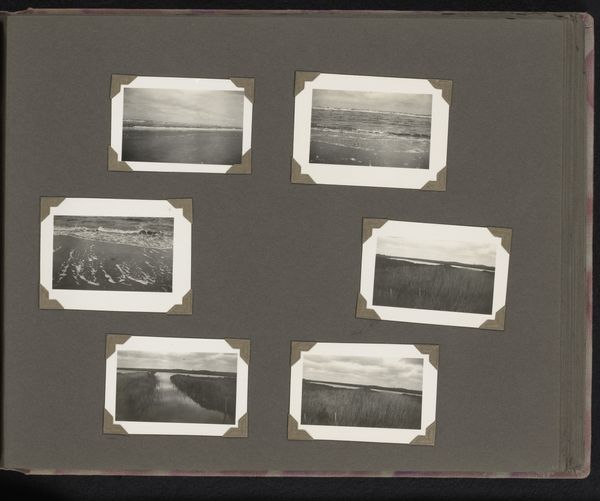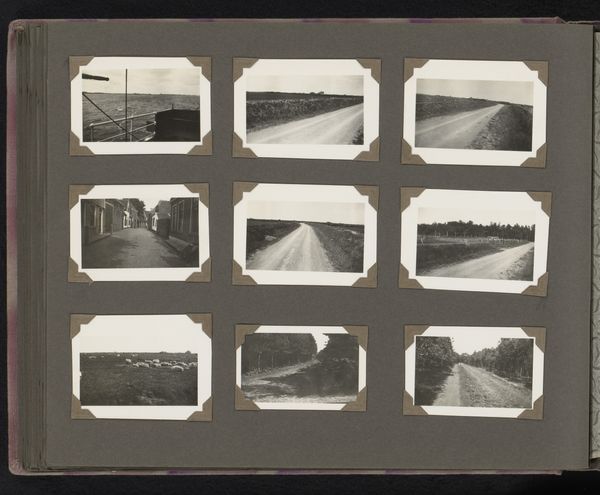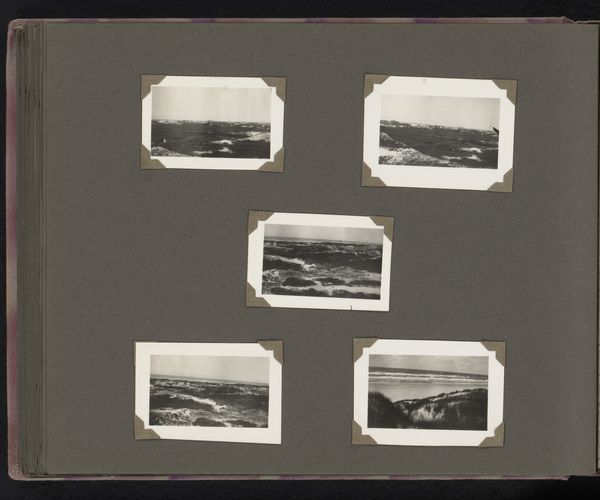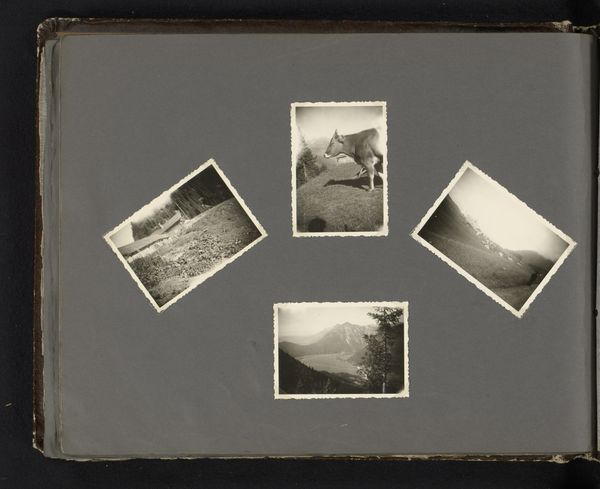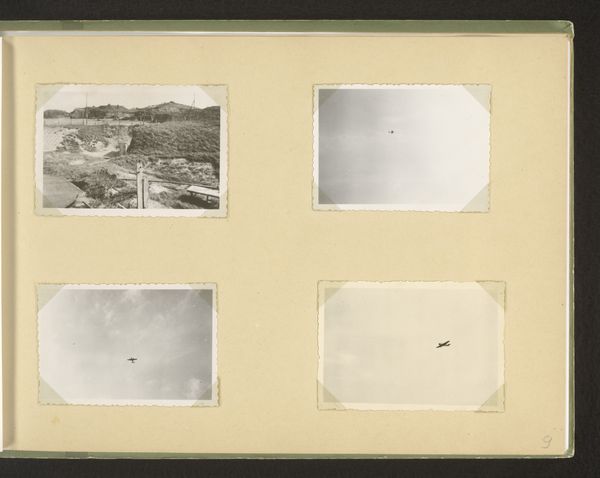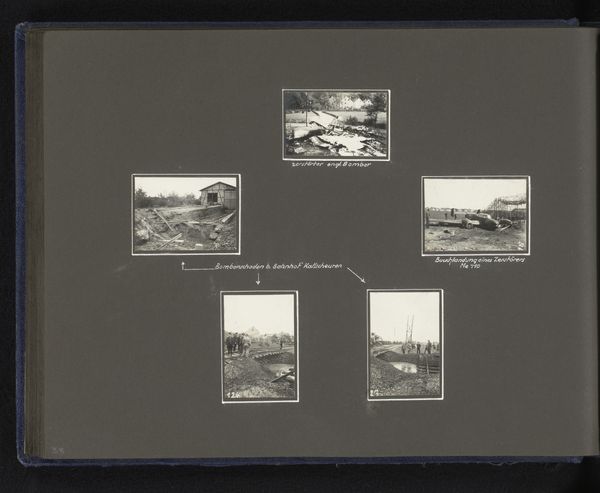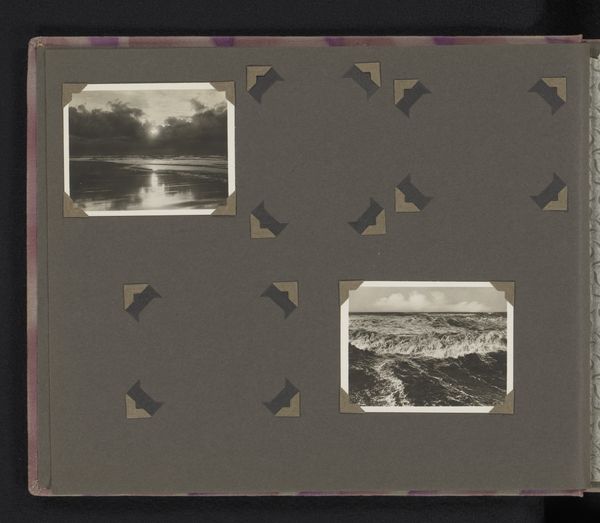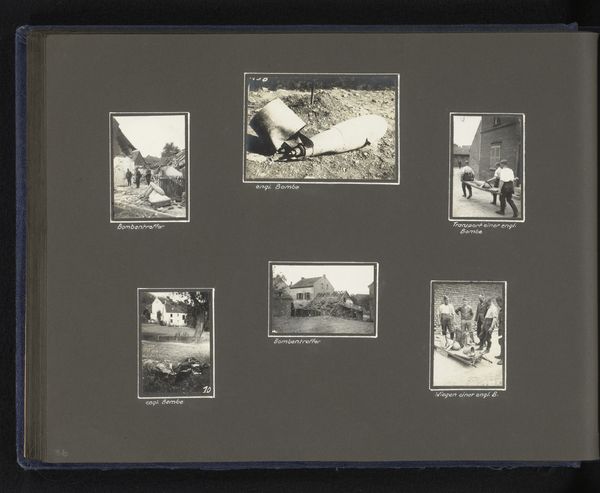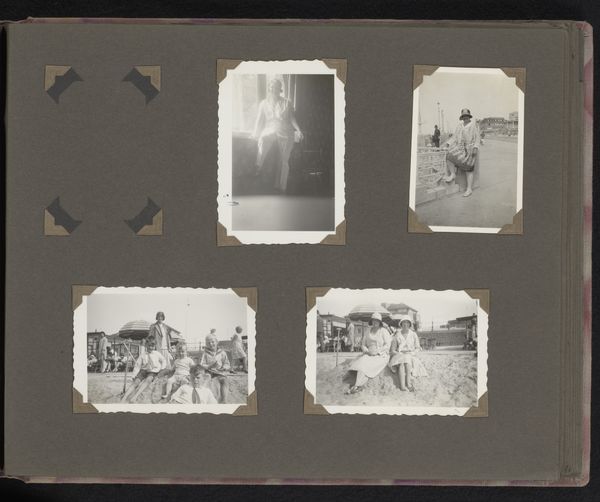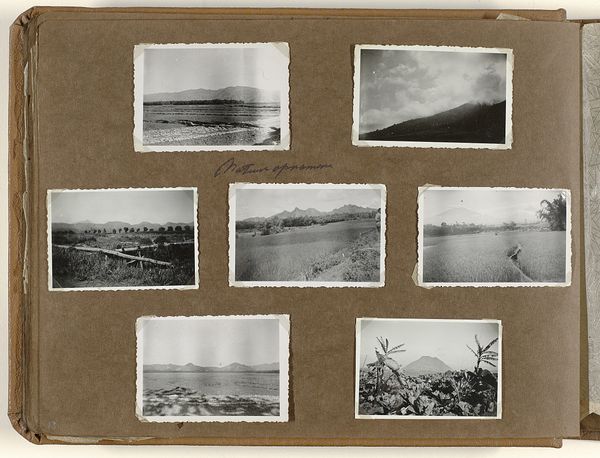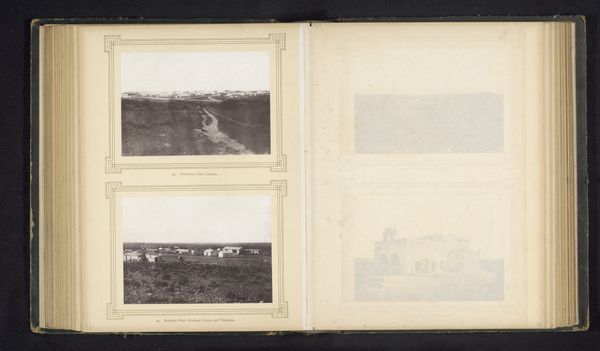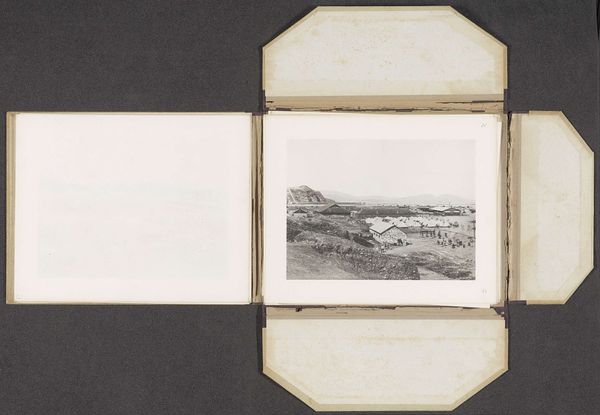
photography, gelatin-silver-print
#
sculpture
#
landscape
#
white palette
#
photography
#
gelatin-silver-print
#
cityscape
#
modernism
Dimensions: height 236 mm, width 287 mm
Copyright: Rijks Museum: Open Domain
Curator: "Zes landschappen en een gezicht op een haven", or Six Landscapes and a View of a Harbor, is a gelatin silver print by Berti Hoppe, dating from around 1930. It's comprised of several small landscape photographs arranged on a larger board, and I am immediately struck by the use of contrasting tones. What is your interpretation? Editor: It does seem stark, the blacks and whites really pop. I notice that each image, while individual, contains similar tonal ranges. Can you elaborate on how you interpret this conscious use of tonal values within the context of photography and pictorial composition? Curator: Well, in considering Hoppe's placement and arrangement, the manipulation of light is critical. This emphasizes form and texture through shadow and contrast, lending each subject a degree of abstraction, while retaining the original composition. In looking at this gelatin print as an artifact, what structural relations do you perceive when viewing this image as a collection? Editor: I think presenting multiple views together encourages me to compare and contrast the shapes and compositions, making me actively consider what features connect these landscapes. I guess what is fascinating, or rather perplexing, is why these particular photographs and what she might be conveying by placing them together on one frame. Curator: The consistent photographic style employed, and arranged on one frame, might suggest Hoppe’s concern for design, not unlike contemporary artists who created albums with grids. I wonder if Hoppe made her views less subjective in their pictorial language? Do you think, even if she employed a grid format like her contemporaries, she could she have considered the viewer, or rather how might her pictures speak in unison to an audience, or the person viewing it? Editor: Interesting... I had not thought about her view as more or less subjective! Now I'm keen to see if she explored the layout, what was her strategy, or even how that impacted Modernism. Thank you, this gave me a whole new perspective to think about this album. Curator: Indeed, it brings new depth in understanding. Perhaps we both came away with further research and consideration to undertake from the discussion.
Comments
No comments
Be the first to comment and join the conversation on the ultimate creative platform.
